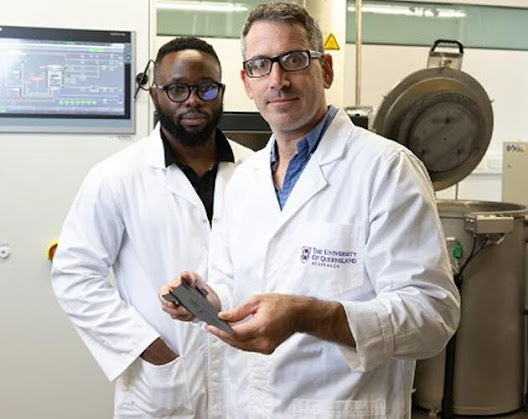The furnace is the first of its type in Australia, allowing UQ researchers to make the next generation of ultra-high temperature composite materials for hypersonic flight.
Hypersonic vehicles travel more than five times faster than the speed of sound, and Associate Professor Michael Heitzmann said they have to be made from materials that can withstand extremely high temperatures caused by aerodynamic heating.
“That’s where UQ and our new furnace at the Centre for Advanced Materials Processing and Manufacturing – or AMPAM comes in,” Dr Heitzmann said. “We are working directly with industry to identify appropriate and cost-effective high temperature #ceramicmatrixcomposites or CMCs, tailored to hypersonic flight applications. In areas like a rocket nozzle or a hypersonic vehicle, the temperatures we’re talking about approach those seen on the surface of the sun. We are trying to get the utmost temperature resistance out of our material and find the most thermal-resistant materials possible. We are pioneering CMC manufacturing in Australia – it is a rare class of material because it’s extremely lightweight and has exceptional heat resistance.”
The components made in the German-manufactured furnace will be used by companies such as Brisbane-based #aerospace manufacturer Hypersonix Launch Systems, which specialises in hypersonic technology and scramjet engines.
Hypersonix Manufacturing Lead Sam Grieve said the UQ team would produce an engine part for the DART AE, a three-metre-long, single-use vehicle, powered by a hydrogen -fuelled SPARTAN scramjet engine.
“The insert is in a part of the engine that could be subjected to temperatures more than 1300 degrees Celsius, due to #hypersonicflows and #shockwaves,” Sam Grieve said. “Normal metal alloys would fail at that temperature, so we need high-performance lightweight materials to ensure the engine will survive in flight.”
Sam Grieve said UQ’s AMPAM group would have a capability to produce high quality CMC’s with #temperatureresistance not previously possible in #Australia.
“This is a very important sovereign capability and an important puzzle piece in establishing an Australian space and hypersonics industry,” he said. “The ultimate goal for Hypersonix is a multi-mission autonomous vehicle capable of delivering satellites to orbit while producing no CO2 in its exhaust. Our Engineering team is excited to be working with UQ to deliver outcomes that could see #Hypersonix competing internationally, and to see Australia at the forefront of international #spacetechnologies.”
Source:www.uq.edu.au/jeccomposites.com
Follow: http://polymerguru.blogspot.com





No comments:
Post a Comment